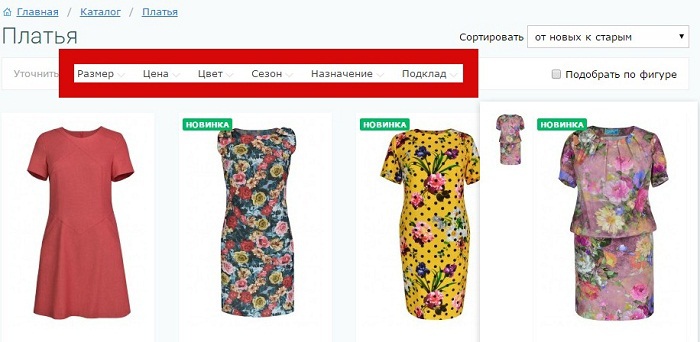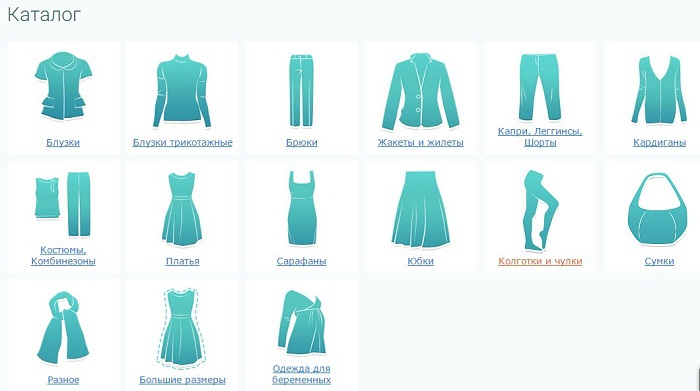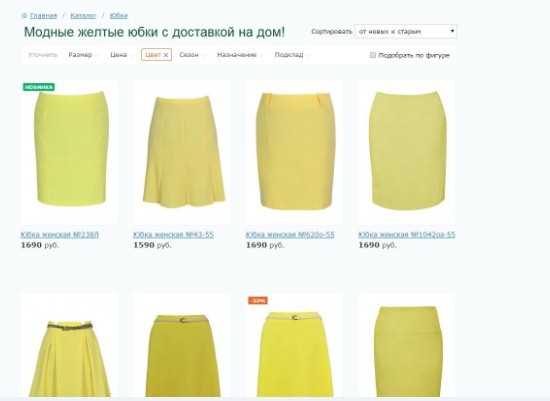How an online store to stop the "drain" of the budget in contextual advertising

Ideally, contextual advertising leads a “hot” audience to the store. Users are already charged for the purchase, while they both come and go. Conversion above 3% is considered a reason to open champagne) As a rule, the efficiency is much lower: from 0.5 to 1.5%. Why only 1 out of 100 store visitors makes a purchase and how to stop the “drain” of the advertising budget?
In this article, we will show 3 critical contextual advertising errors, which almost every owners of online stores repeat from time to time. We will also analyze the case of a clothing store, where we managed to increase the conversion in orders from 1.3% to 3.2% thanks to the personalization of offers in product categories.
Initial data
')
Immediately, we emphasize that the “rakes” of an advertising campaign listed in the first part of the article are characteristic of any niche. In our case, this is an online store for women's clothing with a simple structure: 15 product categories, 2,484 positions. The campaign in Yandex.Direct is configured for 3,687 key requests, distributed under 597 unique ads.
Mistake number 1. Irrelevant landing page
As a landing page - either a directory or a separate category. For example, in the category "Dresses" 240 positions. 85 ads are compiled for them, all lead to the corresponding page of the catalog. Given that buyers have a lot more choice criteria: “Dress is cheap”, “Dress with polka dots”, “Summer dress”, etc. It is understood that after the transition, visitors do a manual sorting by six parameters (size, price, color, fabric, season, purpose) or find a specific product through the search bar.

Most stores operate in this way, despite the fact that it is easy to make fine adjustments. Especially in color, season and purpose, excluding unnecessary action for users. The fewer steps on the way to the product, the higher the conversion.
It is enough to spend several hours to sample the parameters and register the addresses of the landing pages in accordance with the ads. As a result, the traffic from the query “Buy summer dress” should be directed to the collection of summer sundresses, and not to the general category.
Mistake number 2. Ads by non-target requests
These are sentences that absolutely do not coincide with the user's need.
For example, under the request "Dolls with clothes" show:

and even more absurd under the request "Buy a puppy cardigan" show ad:

which leads to the next page:

It is obvious that a person who needs a dog is unlikely to be delighted with women's clothes. This is where the budget is wasted. At the same time, advertisers persist in using homonyms (identical words with different meanings).
The information on the login page should coincide as much as possible with the request and ad text
Our customers had 49 non-target requests with an aggregate consumption of 4,450 rubles per month. It would seem a trifle, but at the cost of one client with Yandex.Direct, 745 rubles is 6 buyers, each of which can become permanent.
On how to reanimate the conversion for non-working queries, read this article .
Mistake number 3. Traffic to the general directory page.
For a number of requests traffic goes to the directory page, where the visitor wants and is oriented. For example, for "Women's clothing cheap" we see:

Moreover, the store has a “Sale” section, where to send users on this request would be much more efficient. Another error related to relevance. More precisely, with its absence.
Personalizing product offerings with responsive content
This is a way to increase the conversion to orders without complex scripts and behavioral analytics.
We took the five most marginal categories: dresses, skirts, pants, blouses, suits. In addition, most of them are context-sensitive: buyers choose goods by price (“Blouses are inexpensive”), style (“Skirt in a cage”), color (“Yellow dress”), purpose (“Business skirt”), season ( "Summer women's trousers") and size ("Women's suits of large sizes").
Combined requests (“Summer dress with polka dots”) were missed in order not to complicate the process. The texts of the announcements were left as they are, the changes affected only the content of the landing pages.
First, they combined the requests into 140 groups related to customer needs and unloaded the Yagla service's substitution table. For example, a user searches for a product by color:

In the original version, it gets to the page of the category “Skirts”, where it has to do the subsequent sorting by color:

After setting up the substitution, the landing page acquired the following form:

Traffic was directed to the page with a selection of the parameter "yellow color" (similar to other categories). But the most important thing is the replaceable heading “Fashionable yellow skirts with home delivery”, which has an attractive condition - home delivery.
Important point: mechanical substitution of headers for requests does not give a strong effect. The decisive factor is the personalization of the sales offer with a favorable purchase condition (free delivery, fitting, discount, etc.)
In more detail fatal errors of adaptive content we assort in a sensational material .
Another example, a group of requests for summer dresses (selection parameter - the season):

A month after testing substitutions in five categories, conversion to an order increased from 1.3% to 3.2%. For comparison, the average conversion of online stores in the “Clothing, Shoes, Accessories” niche is 1.6% (data from the Enter center). Yes, the next step is for the store owners to set up substitutions in the cards for the most marginal goods. Follow the results in the next articles.
With you was Alexander Alimov, the head of Yagla.ru
See you in a week!
Source: https://habr.com/ru/post/291234/
All Articles